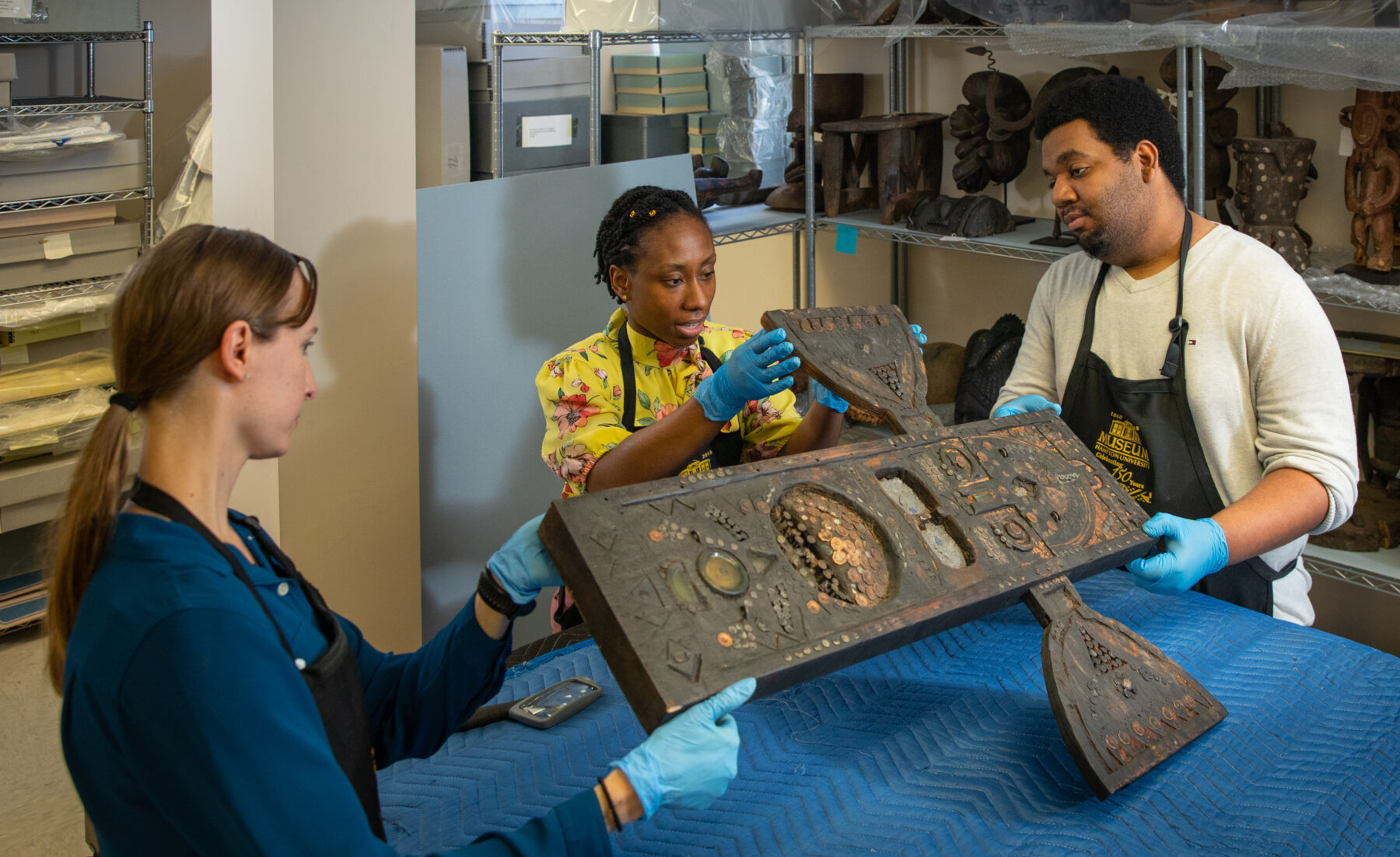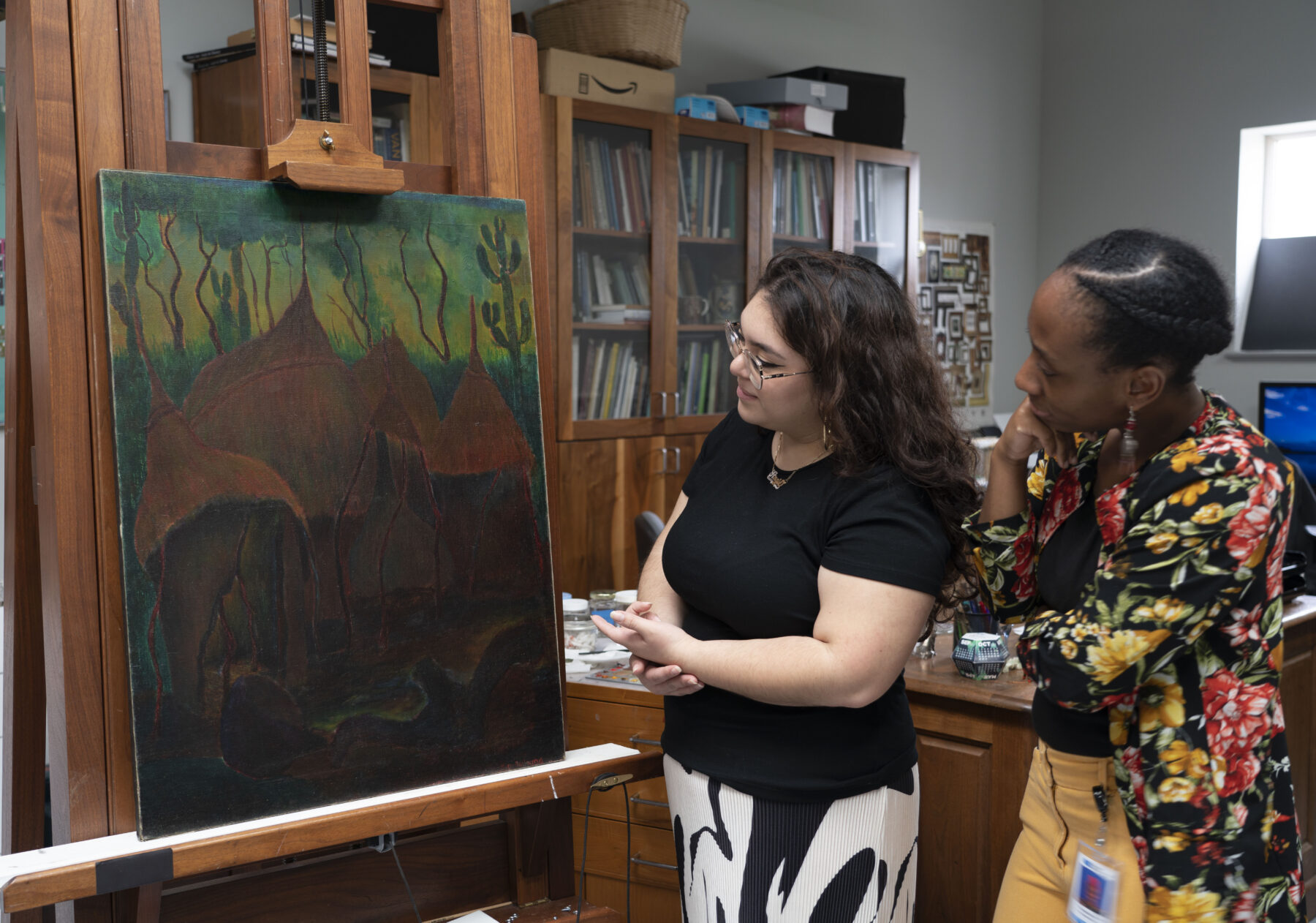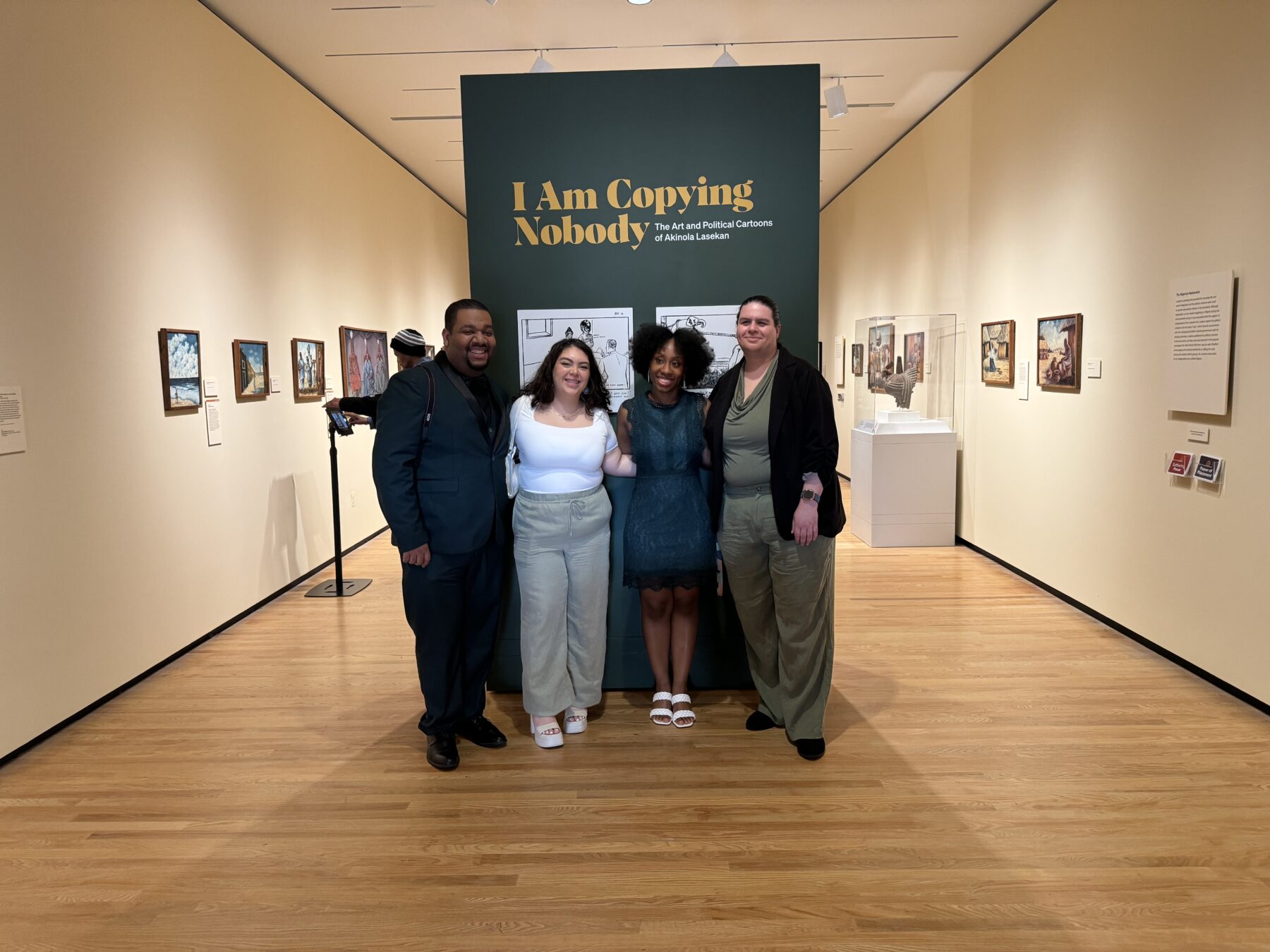Serendipity led me to the Chrysler Museum of Art’s internship program

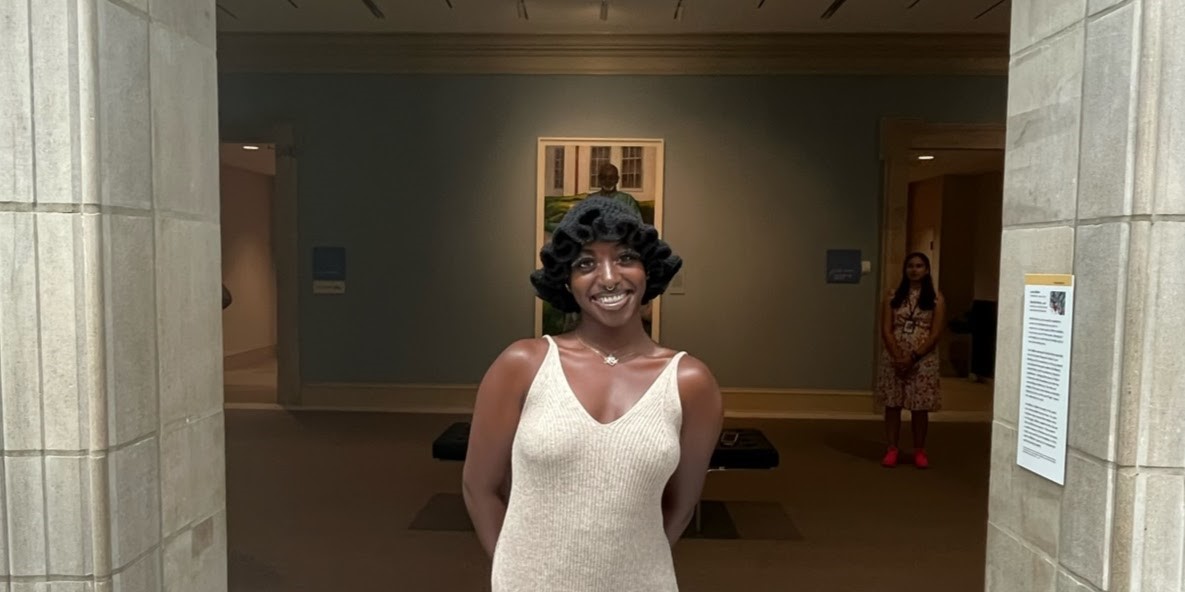
Ever since I can remember, art has been my first love and easiest form of connection between my complex innermost self and the abstract world surrounding me. While in school, simple arithmetic and concrete history lessons always seemed self-explanatory for others and left me with lingering questions. But it was drawing, dancing, painting, and all the other creative mediums I explored throughout my life that revealed a profound intimacy within human connection in ways that my soul understood but could not quite apply language to. Since then, it has been my mission to weave art and creativity into my life by any means necessary. During my fall semester at Hampton University, I took a ceramics class with West African ceramist and professor, Mr. Kwabena Ampofo-Anti. The conversations I had with him about African art developed a fire within me to learn more about my roots by way of storytelling through artwork. To my surprise, one winter evening, a classmate of mine extended an opportunity to dive deeper into the art history of Contemporary and Modern African art at the Chrysler Museum of Art.
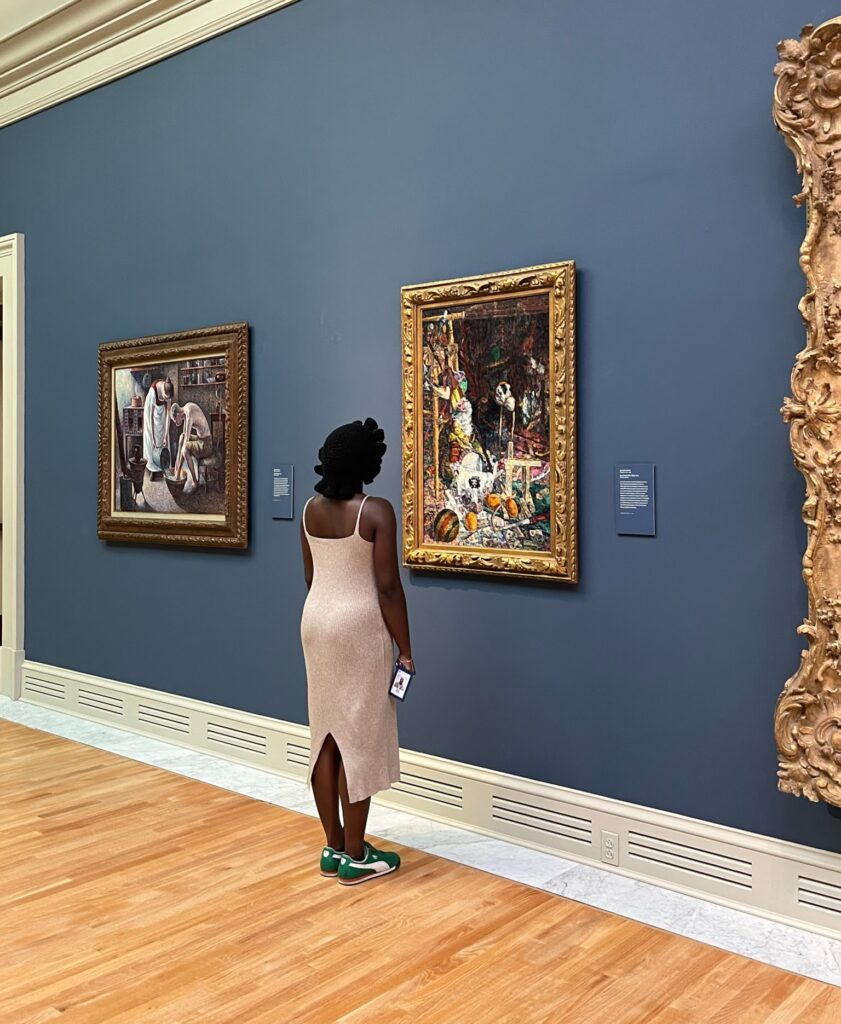
Initially, I had some fears about my internship experience. Unlike my internship peers who dedicated their studies to art history and museum studies, I wondered if my psychology background would be valuable to the Chrysler Museum. I have a heavy interest in intertwining my knowledge in the arts and social justice with research in Black psychology. Essentially, I hope to use my expertise to provide unconventional methods of healing trauma within the Black community. Nonetheless, my fears were quickly replaced with an energized excitement once I had conversations with my supervisor, Tashae Smith. On my very first day, Tashae and I discussed topics such as the role of Blackness in media, subtle racist antics in the art world, and art’s transition from political communication to casual creation for one’s own vanity.
Right away, I began researching the history of Contemporary African art. Learning about the dual nature of Modern African art surprised me most. It acted as both a symbol of access to unprecedented resources for African artists looking to internationally expand their artistry, while also highlighting an underbelly of greed and excessive power by Western patrons. Due to newer art forms developing within classist ideology and urban societies, Modern African art became commodified and deemed as “souvenirs of Africa.” Capitalism deteriorated its connections to past African artworks which held sacred and functional value. Meanwhile, beneath the gleam and glitter are African artists struggling to make ends meet. African artists continue to rely heavily on the guidance and financial support of international and local European patronage to bring their dreams into fruition. African art has a rich history of support from anthropological and paternalistic patrons looking to understand Africa from a deficit standpoint, leaving artists vulnerable to adopting storylines that do not inherently belong to them. Who is the African artist if they dare to be more than the mystical beings that major names in the art world have misunderstood them as? Who is the African artist if they remain dedicated to truth-telling despite the risks associated with doing so? Furthermore, what is the value of the African artist who uplifts the beauty that surrounds them compared to those capturing cruelty or creating vacation memorabilia that a Westerner can take back home? This is why my internship project, the Spring 2024 exhibit, I Am Copying Nobody: The Art and Political Cartoons of Akinola Lasekan, is a pivotal asset to my journey.
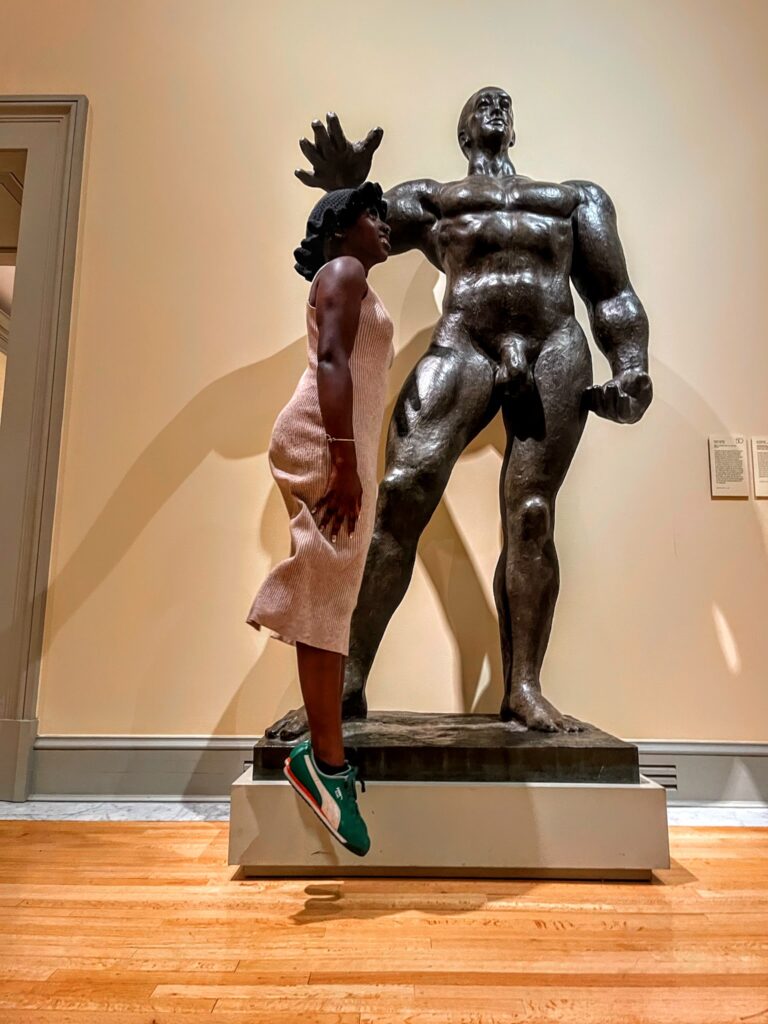
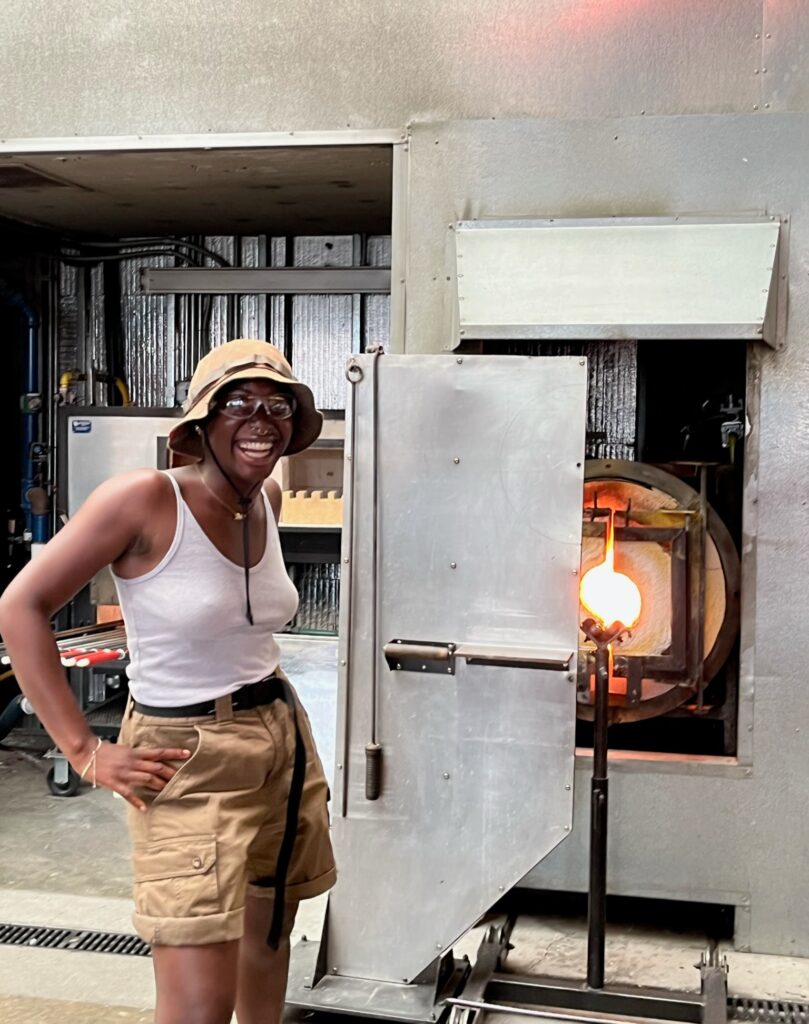
Researching day in and day out was exciting most of the time and tedious some of the time. Certainly, there were outstanding factors of my internship experience that made it well-rounded. I got to know much more about Chrysler’s infrastructure and mission. With every step I took, I increasingly understood the prioritization of the visitor experience and the hospitality it brings. Every week, I had an adventure to look forward to. Whether that was getting to know the mechanics of the conservation lab, going on tours with docents, or having conversations with Erik Neil (museum director) and Emily Shield (Public Programs Coordinator). I also thoroughly enjoyed exploring The Glass Studio and their fully immersive free public demos of glass art making. Additionally, getting to see Akinola Lasekan’s pieces in person at the Hampton University Museum and touring The Myers House were priceless moments. Being face-to-face with historical pieces or landmarks facilitates a connection that I had not realized I missed since the pandemic.
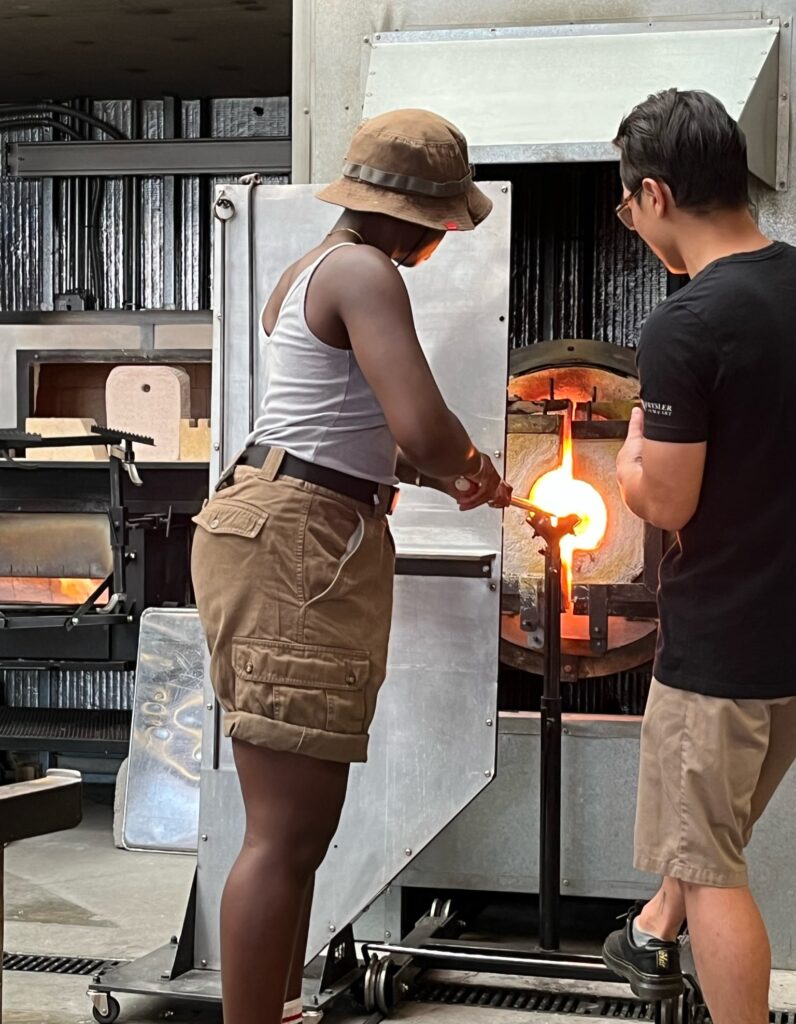
I cannot talk about my internship experience without discussing the interns I worked with. My time at the Chrysler Museum would have been lackluster without working with my partner, Sophia Kim. Our breaks for tea, chats that made the tedious days feel less difficult, and expanding our friendship beyond the four walls of the office space collectively brought me joy. Sophia and the other interns gave me fresh perspectives about art that I had not considered before. I found myself actively listening to soak everything in rather than speaking so much in our intern cohort meetings. This was a new skill that I exercised the most in this environment. Besides active listening, my internship made it possible to view artwork in a more technical way. The act of intentionally and thoughtfully viewing art has allowed me to approach art with enhanced curiosity and in-depth understanding. Fine-tuning my research skills has supported my critical thinking and created a strong foundation for label writing, a skill unfamiliar to me before my internship. My experience strengthened my appreciation for the sensual nature of creating and curating artworks that manifest diverse feelings within viewership. The skills I have learned have not only impacted my internship role, but also my own artistry. I wish that I received more chances to connect more with my senses by creating my own art. Exercising creativity in a more hands-on way would enhance the roles of future curatorial interns by developing a deeper appreciation for their internship project and tapping into the vast world of imagination within artists.
In the end, I am grateful for all this position has exposed me to. Though I am not certain that art curation is a passion of mine, getting to know the particulars was valuable for me personally, artistically, and so forth. I am excited to witness its lessons displayed in my ongoing journey.
Explore other articles like this
The Andrew W. Mellon Fellowship: Now and Beyond
In this post, I will highlight some of the accomplishments of this project and address two main takeaways that can help those looking to reproduce a similar fellowship program.
Art Spotlight: The Abandoned Hut by Mordecai Buluma
In this blog post Angie and Tashae discuss the symbolism behind The Abandoned Hut by Mordecai Buluma as well as the conservation treatment used to prepare it for exhibition.
Opening of I am Copying Nobody the Art and Political Cartoons of Akinola Lasekan
On April 13, 2024, I Am Copying Nobody: The Art and Political Cartoons of Akinola Lasekan opened at the Chrysler Museum of Art. Here are some highlights from the exhibition.
